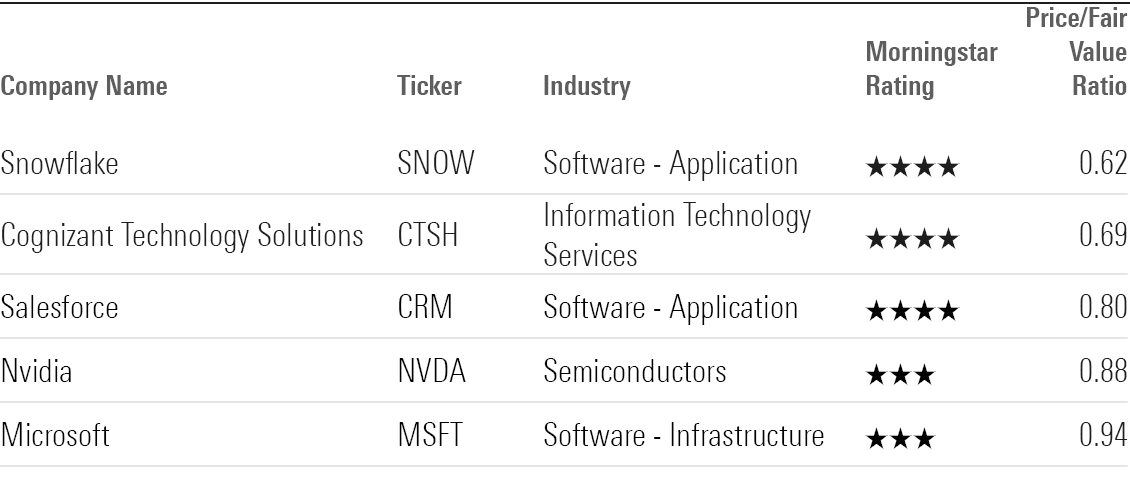20 Top Pieces Of Advice For Choosing AI Stock Analysis Websites
20 Top Pieces Of Advice For Choosing AI Stock Analysis Websites
Blog Article
Top 10 Tips To Assess The Integration And Compatibility Of Ai-Based Stock Predicting/Analyzing Trading Platforms
AI stock predicting/analyzing platforms must be compatible and seamlessly integrate with your existing systems, tools and workflows. Platforms that are compatible with the existing workflows, tools, and systems can enhance efficiency and effectiveness. Here are the top 10 suggestions for assessing the compatibility and integration of these platforms:
1. Check Brokerage Integration
Check that your platform works seamlessly with the trading or brokerage service you prefer.
Trade execution: Determine whether your platform permits you to execute trades directly with the integrated broker.
Account synchronization Check whether the platform allows you to transfer balances between your accounts in real-time as well as positions and transactions.
2. Check the availability of APIs
API access: Make sure the platform offers an API (Application Programming Interface) to allow developers to create customized tools or automate workflows.
API documentation: Check to see if there are clear examples of how the API is used.
Rate Limits: Verify the API's rates limits to make sure they're reasonable and will handle your expected usage.
3. Verify the Integrity of Third-Party Tools
Popular tools See if there are any integrations between the platform and tools like Google Sheets, Excel, or trading robots.
Export and import of data: Ensure that the platform allows easy export/import of data to and from other tools.
Plugins/extensions : Verify that the platform allows for extensions or plugins. These add functionality.
4. Test Compatibility with Operating Systems
Desktop compatibility - Make sure that the system you select can be used with Windows, macOS and Linux.
Mobile compatibility - Check to see if your platform has a mobile version available for iOS and Android.
Web-based access: Check that the platform can be access via a browser on the web for added flexibility.
5. Examine the Data Integration Capabilities
Data sources: Ensure whether the platform is compatible with multiple data resources (e.g. market data sources or news feeds).
Real-time Data Feeds: Look to see if your platform has real-time analytics.
Make sure that your platform supports the import of historical data for backtesting or analysis.
6. Assess Cloud and On-Premise Compatibility
Cloud-based Platforms: The platform should be available anywhere there is an internet connection.
On-premise Solutions: If you would prefer to deploy on-premises ensure the platform is compatible.
Hybrid solutions: See if the platform offers a hybrid model combining cloud capabilities and on-premise ones.
7. Check for Cross Platform Syncronization
Device synchronization: Ensure that your platform is synchronized to sync settings and data across all devices (desktops, mobiles, tablets).
Check for real-time updates to determine if any changes made by one device will reflect immediately on the other.
Check the platform to see if it allows access to data or functions when you are offline.
8. Verify the the compatibility of trading strategies
Algorithmic trading: Check that the platform is compatible with algorithmic or automated trading strategies.
Custom indicators: Find out whether you are allowed to utilize custom indicators or scripts.
Strategy backtesting: Check whether the platform allows backtesting trading strategies with historical data.
9. Assess Security and Compliance
Data encryption - Make sure that your platform uses encryption for all data at all times, including when it is at rest.
Authentication: Verify whether the platform supports authenticated methods that are secure (e.g., two-factor authentication).
Compliance with regulations: Make sure that the platform complies with relevant laws (e.g., GDPR, FINRA, SEC).
10. Test Scalability and Performance
Scalability - Ensure that the platform you choose will handle your growing requirements in terms of data and data.
Performance during load: Determine whether the platform responds in high-volatility markets.
Utilization of resources - Make sure that the platform effectively uses system resources like CPU, memory or bandwidth.
Bonus Tips:
User feedback: Check out reviews and testimonials from users to assess the platform's ability to integrate.
Trial period: Take advantage of a demo or trial to see how the platform works with other processes and tools.
Support for customers: Make sure your platform has a robust support for integration-related problems.
These suggestions will assist you to assess the compatibility and integration capabilities of AI stock-predicting/analyzing trading platforms. This will ensure that they are compatible with your current platforms and boost your trading efficiency. Have a look at the recommended ai for stock predictions for website examples including best AI stock, AI stock trading bot free, ai trading, AI stock market, AI stock trading, ai for investment, options ai, AI stock trading app, ai trading, best AI stock trading bot free and more.
Top 10 Tips For Assessing Regulatory Compliance With Ai Stock Predicting/Analyzing Trading Platforms
Regulation compliance is an important element to evaluate AI-based trading platforms. Compliance ensures that the platform complies with financial regulations, is operating within legal frameworks, and protecting the user's information. This reduces the risk of legal or financial problems. Here are the top 10 suggestions on how to assess the conformity of these platforms.
1. Verify Licensing and Registration
Regulatory Authorities: Make sure that the platform is registered with the appropriate regulatory organizations (e.g. SEC US, FCA UK and ASIC Australia) and holds an authorization.
Verify that brokers who are integrated into the platform are licensed and licensed and.
Public records: You may check the official website of the regulatory body to see if the platform is registered and if there have had any violations over the years.
2. Compliance with Data Privacy Evaluation
GDPR - If your platform is located in the EU or serves users from the EU ensure that it is compliant with GDPR.
CCPA : California Consumer Privacy Act (CCPA) compliance should be checked by users.
Policies for handling data. Examine the platform's privacy policies and ensure that it clearly outlines the manner in which user data is collected, shared and stored.
3. Examine Anti-Money Laundering (AML) Actions
AML policies - Ensure that the platform's AML policies are robust and effective in detecting, prevent and detect money laundering.
KYC procedures. Check if your platform follows Know Your Customer processes for authenticating user identities.
Monitoring transactions Check if your platform is monitoring all transactions for suspicious activity and notifies the authorities.
4. Check the compliance to Trading Regulations
Market manipulation: Make sure the platform is equipped with measures to prevent manipulating the market, like spoofing or wash trading.
Order types: Verify if the platform complies with rules regarding types of orders (e.g., no unlawful stop-loss hunting).
Best execution: Check if the platform is in line with the highest standards of execution, and ensures that trades are executed at highest price available.
5. Assess Cybersecurity Compliance
Data encryption. Ensure your platform uses encryption of user data both in the rest.
Incident response: Verify if the platform has a clear incident response plan for cyberattacks or data breaches.
Certifications - Find out whether your platform holds any cybersecurity certifications.
6. Transparency and Disclosure
Disclosure of fees: Ensure that the platform is transparent about all fees, including any hidden or additional fees.
Risk disclosure: Check if there are clear and explicit disclosures about risks, specifically in high-risk or leveraged trading strategies.
Performance reporting: Determine whether the platform is clear and accurate reports on performance for its AI models.
7. Verify that you are in compliance with international regulations
Transborder trade If you plan to trade internationally make sure the platform complies in all countries.
Tax reporting: Verify whether the platform has tools or reports to assist users in complying with tax laws (e.g., FIFO rules in the U.S.).
Conformity with international sanctions: Be sure the platform strictly adheres to these regulations and doesn't permit trading between prohibited countries or entities.
8. Review Record-Keeping, Audit Trails
Transaction records: To meet regulatory and auditing reasons, make sure that the platform maintains complete records of all transactions.
Logs of activity for users: Determine whether the platform records users' activities, including transactions, logins, and changes to account settings.
Audit-readiness: Check if the platform is equipped to provide all necessary documents and logs to support an audit by a regulatory agency.
9. Verify compliance with AI Specific Regulations
Algorithmic trading regulations: If your platform allows algorithmic trading, ensure it's in compliance with regulations such as MiFID II in Europe or Reg SCI in the U.S.
Fairness and Bias: Check to see if there are any biases that the platform can detect and reduce within its AI model. This will ensure ethical and fair trade.
Explainability - Ensure that the system can give clear and concise explanations regarding AI-driven predictions, decision-making and more. as required by specific rules.
10. Review feedback from users and regulatory history
User reviews: Make use of user feedback to determine the platform's regulatory compliance.
Review the history of regulations to see if there were penalties or fines for violations of rules.
Third-party Audits: Make sure that the platform is subject to third-party reviews to ensure it is in compliance with all regulations.
Bonus Tips
Legal consultation: Consider consulting an expert in the field of law to examine the platform's conformity to relevant rules.
Trial period. You can use the trial or demo of the platform to try out its compliance features.
Customer support: Ensure the platform has assistance for compliance-related questions or problems.
Utilizing these suggestions using these tips, you will be able to determine the level of compliance with regulations within AI stock trading platforms. This will allow you to choose a company operating within legal frameworks that protects your interest. The compliance not only reduces the legal risk but also builds confidence in the platform's services. See the top free ai tool for stock market india examples for more advice including best AI stocks, ai for trading stocks, best AI stocks to buy now, stock trading ai, AI stock predictions, ai copyright signals, free ai tool for stock market india, AI stock prediction, best ai penny stocks, AI stock prediction and more.